
Keeping houseplants healthy can be a constant challenge. You might think that keeping them indoors means they will remain safe from invading insects, but in reality, many varieties would love to make your plant their lunch.
Indoor plants improve your home’s oxygen levels and help you feel relaxed, but you’ll lose any benefits they provide if you notice they are overrun with insects.
Here are what common houseplant pests you need to pay attention to and how you can prevent them from destroying your plants.
The Problem with Houseplant Pests
While houseplant pests tend to be rarer than those on their outdoor counterparts, they can cause plenty of damage fast.
A few insects at a time won’t cause long-term damage, but infestations rarely stay small. The problem is that most homes provide the perfect habitat space for insects to reproduce, meaning that houseplant pests can increase exponentially in little time.
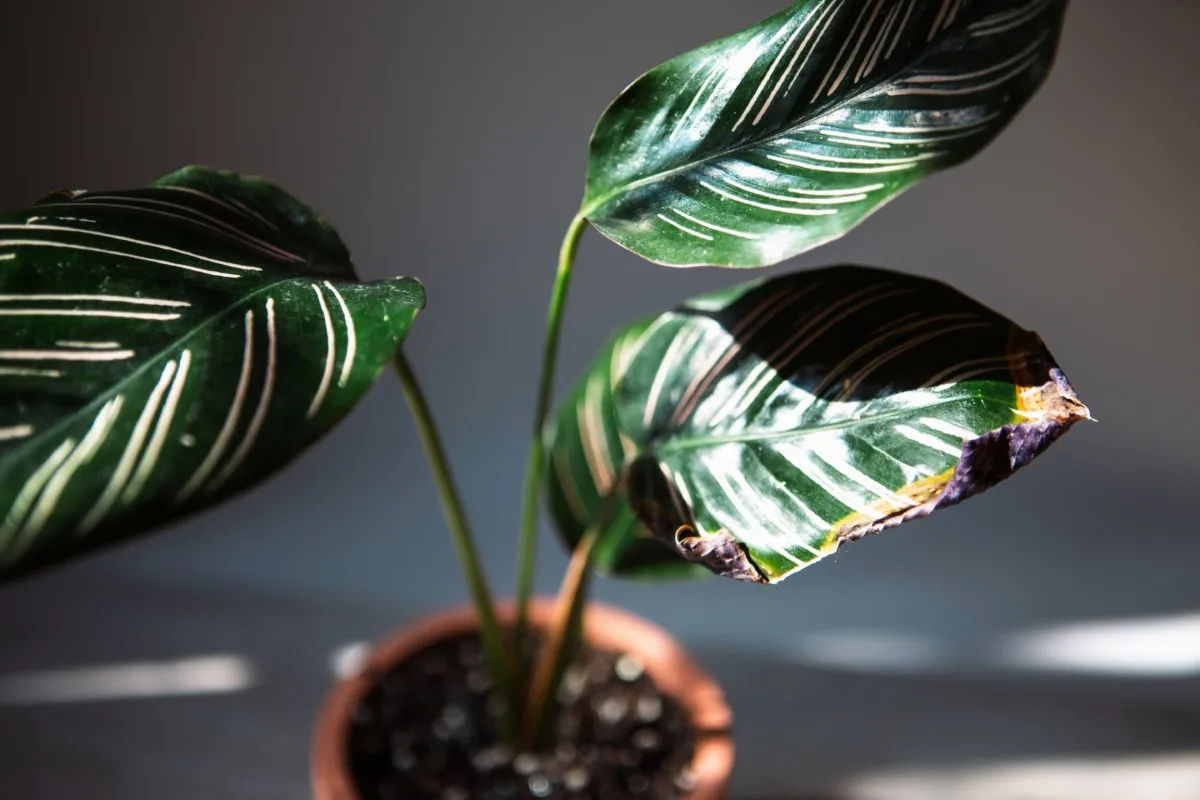
Miss an infestation for a few days, and your plant can quickly get beyond saving.
Likewise, your options for eradicating a pest problem are much more limited indoors. No one wants to spray strong synthetic chemicals throughout their homes, and you can’t count on beneficial predators like ladybugs to feast on the invaders.
For these reasons, you need to stay diligent to protect your houseplants. A quick change in a plant’s condition signifies that something sinister might have moved in. Here are ways to identify and eradicate some of the most common houseplant pests to keep your potted friends a little healthier.
8 Top Houseplant Pests to Be Aware Of
1. Spider Mites
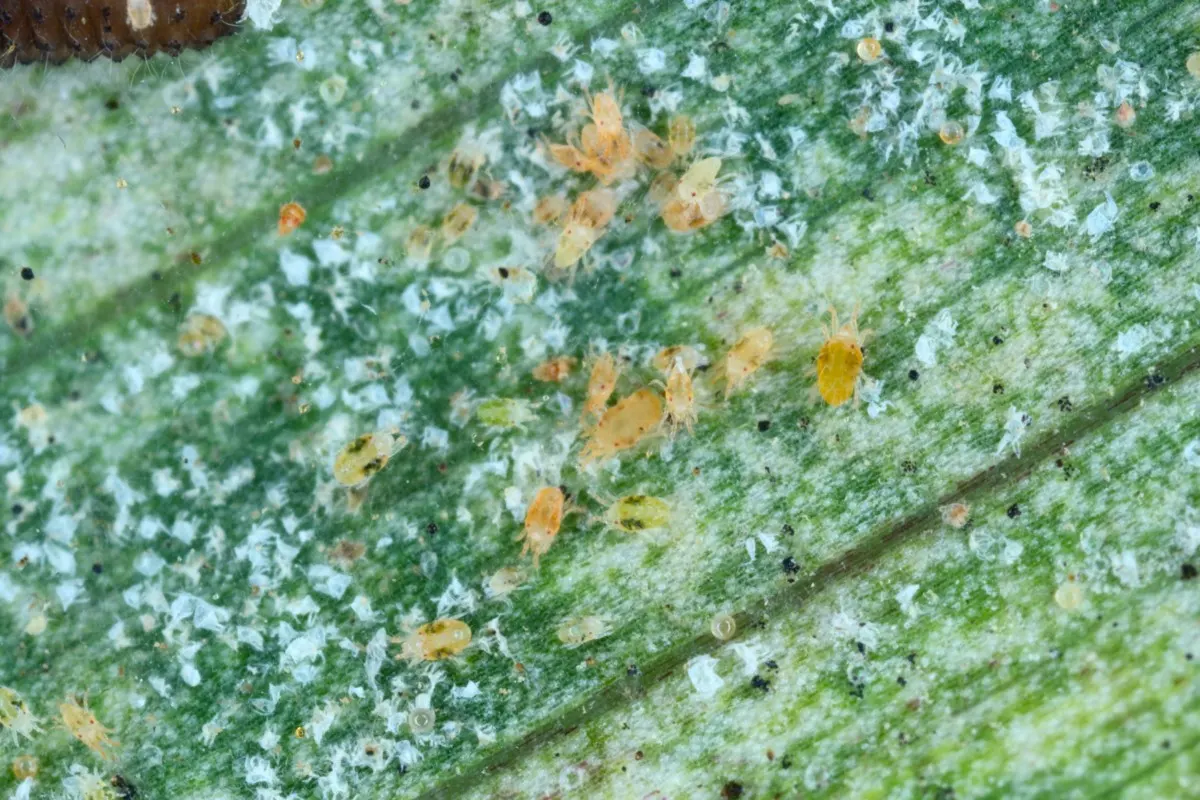
These tiny insects are hard to spot, meaning an infestation can sneak up on you. Like their namesake, they create silky webs for latching onto plants and feasting on their juices. They also use these webs to travel from plant to plant, meaning an infestation can spread quickly.
In their natural habitat, spider mites lay eggs in the fall that will hatch in the spring. Unfortunately for plant-lovers, this process can take less than a week in the right conditions, quickly turning a few dozen bugs into thousands.
How to spot:
Check the undersides of leaves for signs of webbing. The insects themselves look like specks of dust within the webs.
Symptoms:
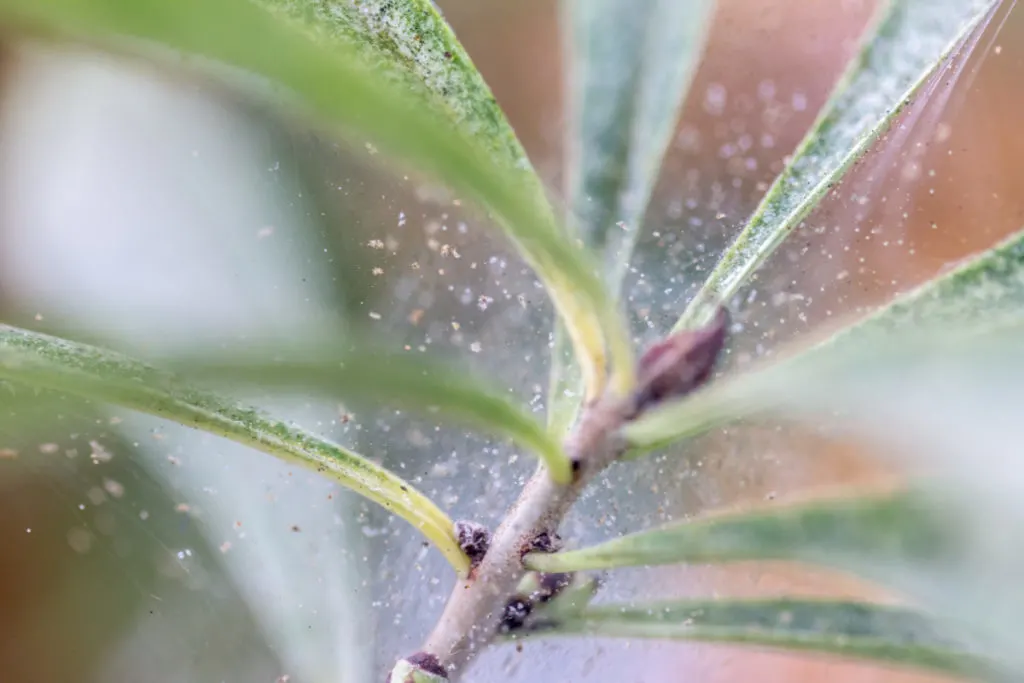
Sticky webbing is the telltale sign of spider mites, as are mottled leaves with brown dots. Infected plants can look like they are withering.
Treatment:
Chemical pesticides are ineffective for spider mites, so you’re best served using organic eradication methods. Remove any infected leaves and cut off stems below the point you see any webs (don’t compost this plant material—throw it away instead).
Wash the remaining leaves with insecticidal soap, ensuring you get the undersides. Regular applications of neem oil will also work wonders. Some people put their infected plants in a lukewarm shower for a few minutes each week to rinse off any remaining insects.
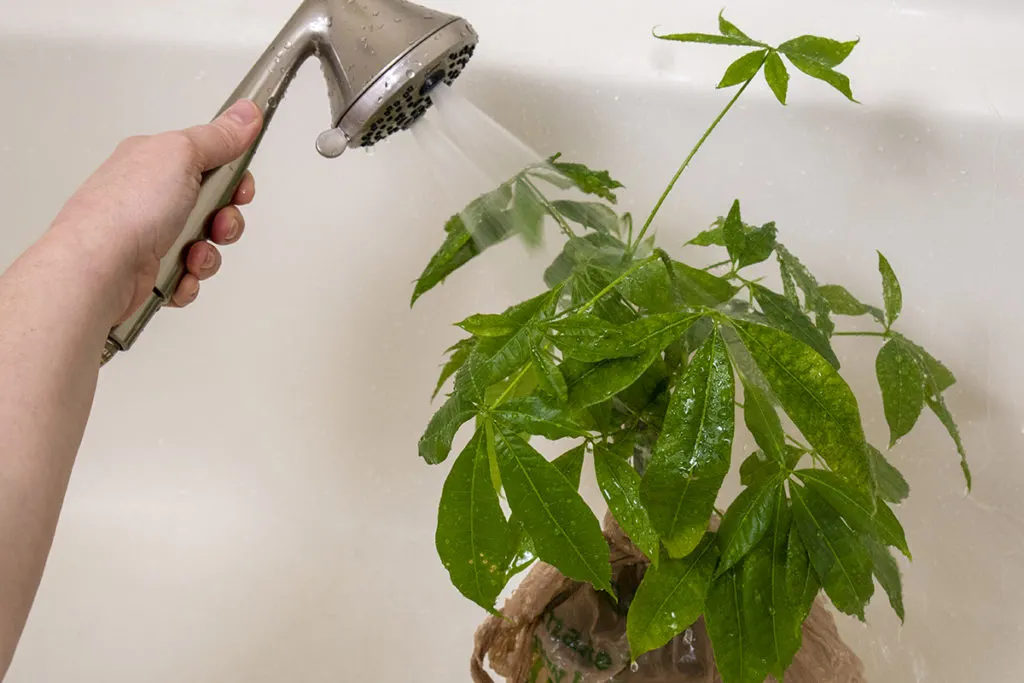
You may want to isolate infected plants away from others for several weeks to reduce the risk of an infection spreading further.
2. Aphids
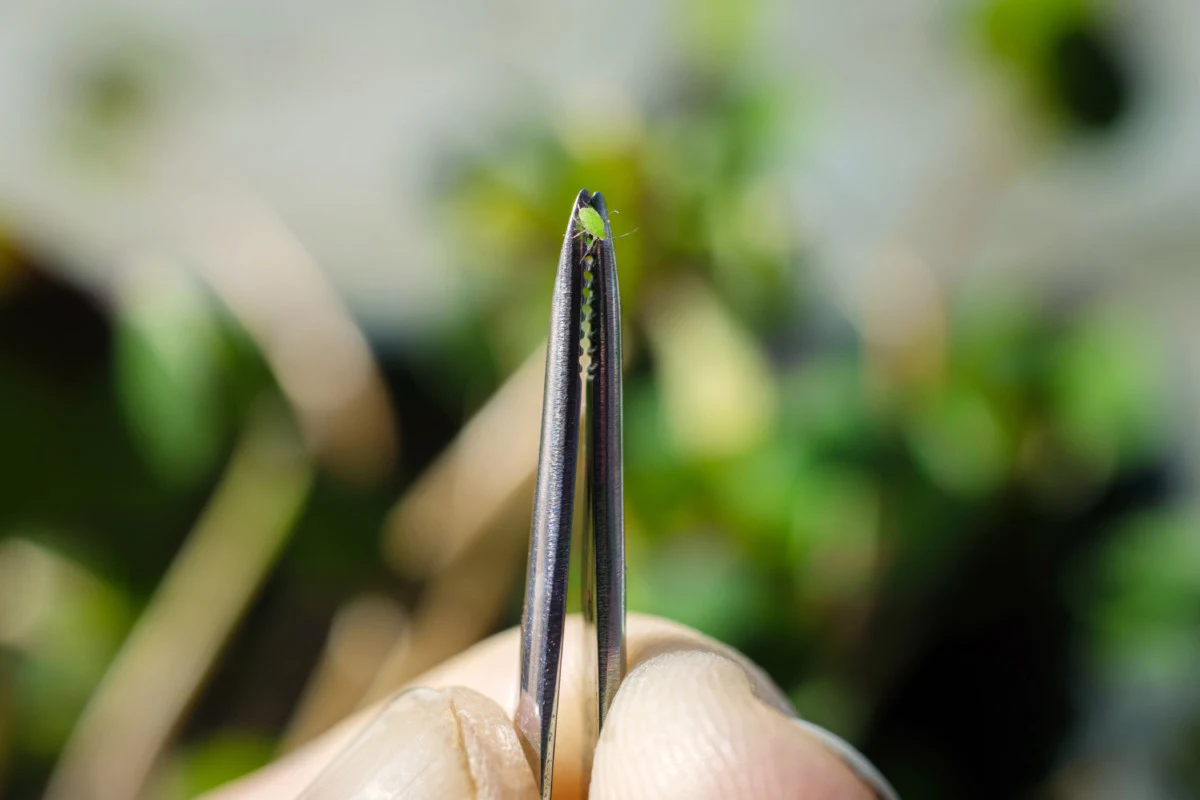
A favorite food source of ladybugs, aphids are common on indoor and outdoor plants alike. These small green insects love to suck the sap from new plant growth, weakening it in the process.
Let an infestation go too long, and the plant becomes extra vulnerable to disease.
How to Spot:
Aphids can be seen with the naked eye and typically clump together. Most are green, but they can also be black or grey and are typically spotted on plant stems or the undersides of leaves. If you don’t see the insects, look for a sticky, sugary liquid known as honeydew deposits along with random patches of yellow.
Symptoms:
Infected plants will have sections that are shriveled and dying back due to the insects sucking out their juices.
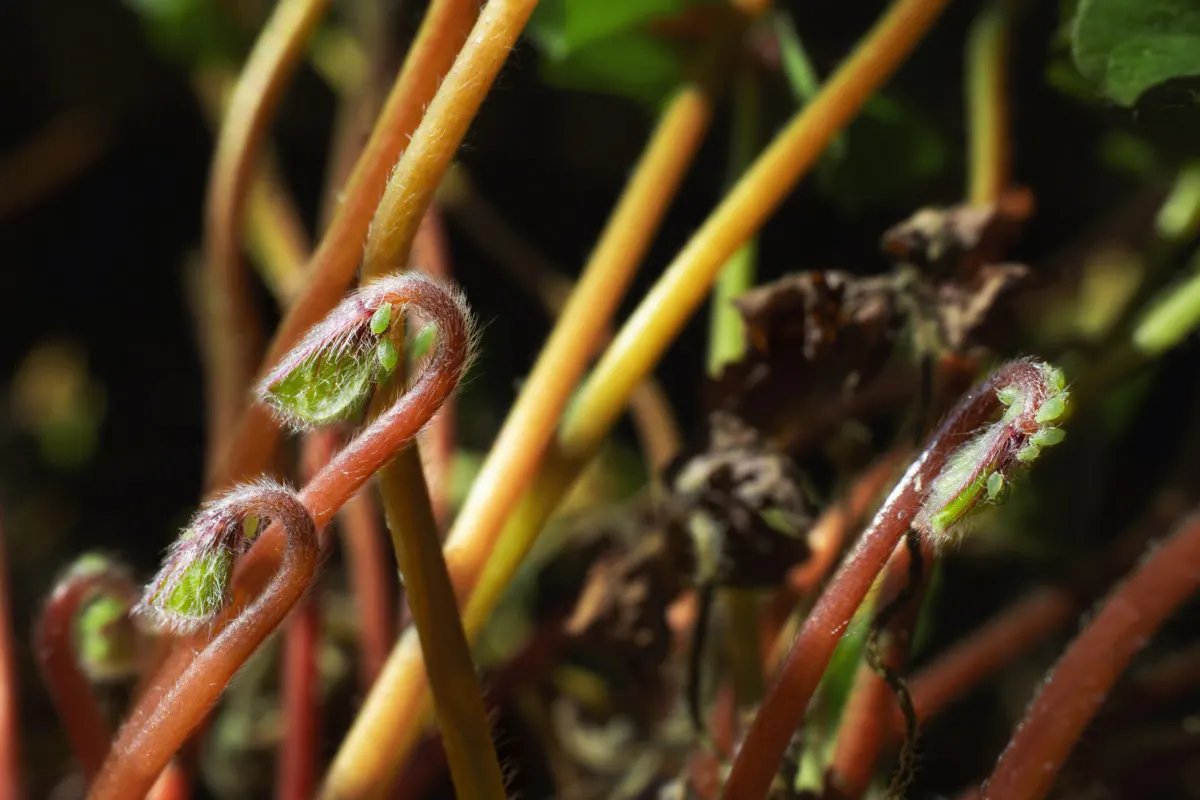
Treatment:
Insecticidal soaps work well for controlling aphids. Make sure you treat the undersides of leaves where they tend to hang out. Since the insects are large enough to see, squish any you see.
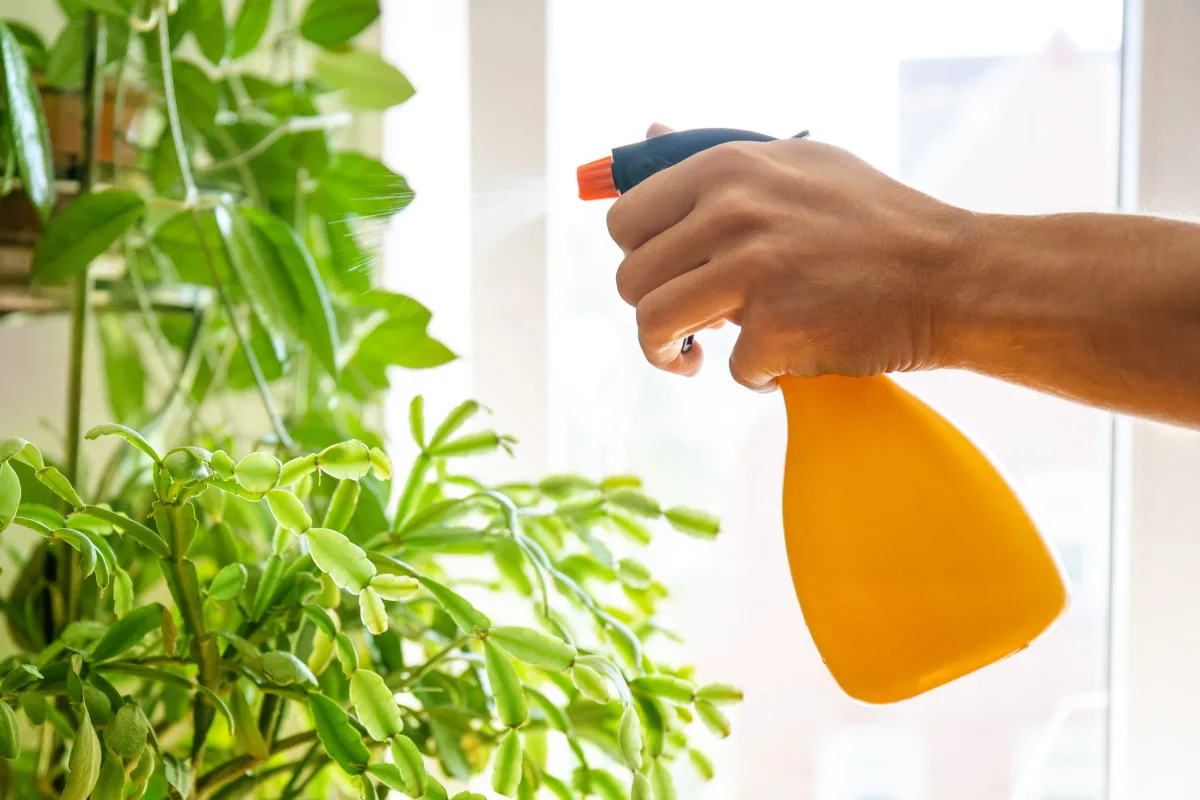
If you need something stronger, consider a spray with neem oil or pyrethrin, and use it every few days until the problem improves. Isolate infested plants to reduce spreading.
3. Scale
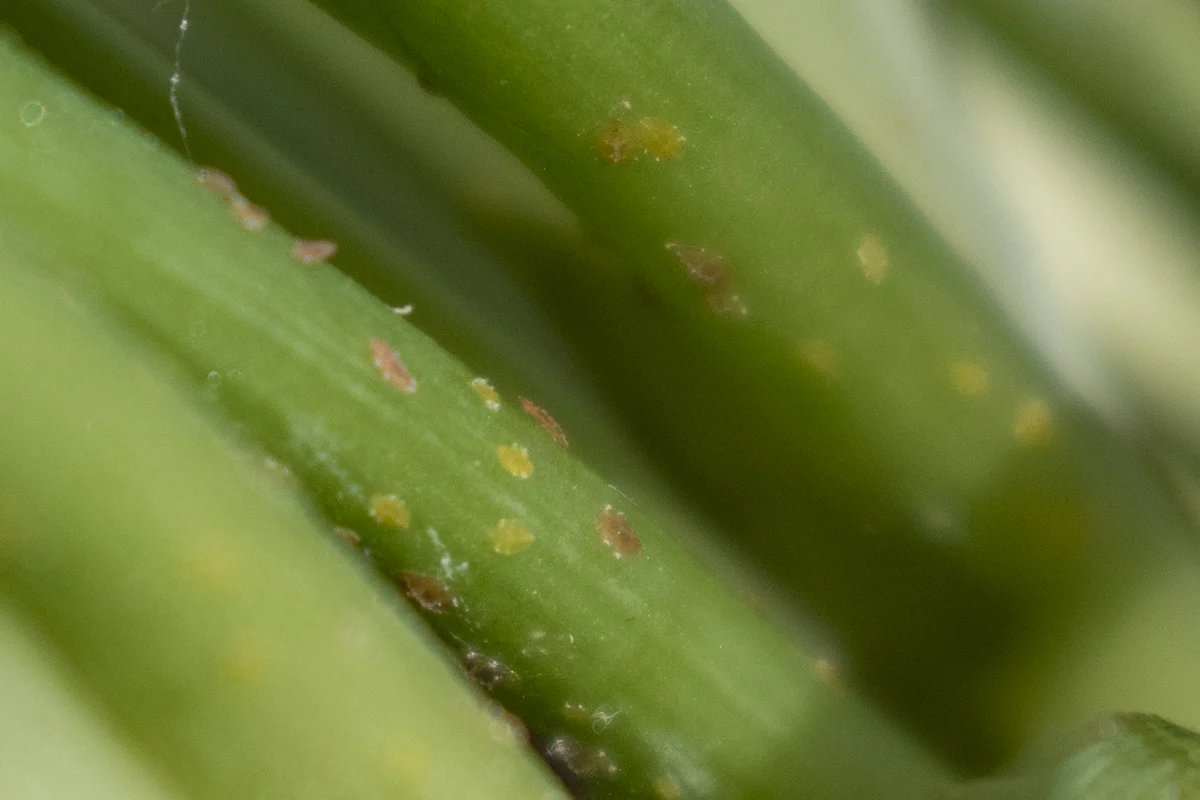
These little brown ovals barely move, but scale bugs can cause big problems for houseplants. Tiny eggs and excellent camouflage as adults make them challenging to eradicate, meaning you need to get on top of the problem fast.
How To Spot:
Most scales are tan or light brown with hard outer shells, and they tend to cluster under leaves. The eggs are almost too tiny to see.
Symptoms:
These sapsuckers will leave round, ovular bumps on plant stems and leaves, leading to yellowing and poor growth.
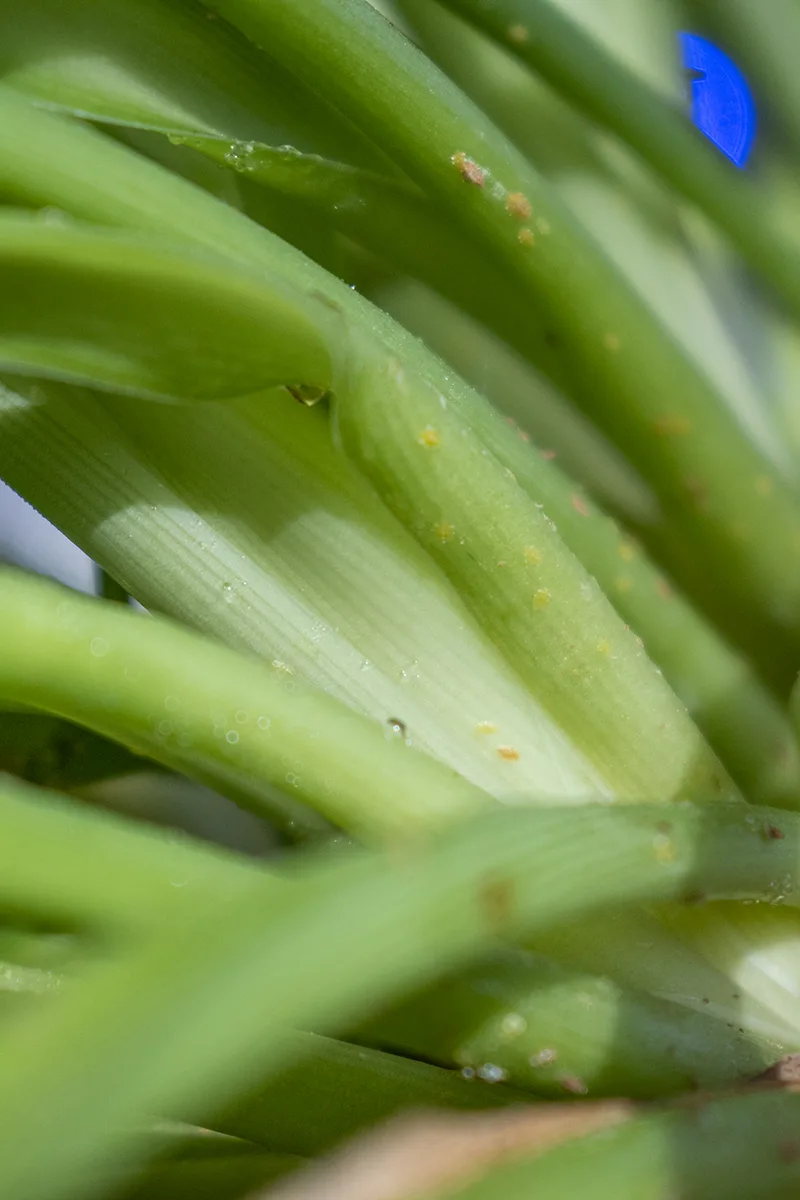
Signs of scale damage include honeydew secretions over the leaves and stems that has a black, almost sooty appearance.
Treatment:
If the problem is small, it’s possible to eradicate scales by plucking them off plants. Otherwise, you can dab them with alcohol or insecticidal soap. Stronger chemical sprays can work as a last resort, but they are often wasted because they won’t always penetrate the insect’s hard shell.
Note: if possible, treat a scale infestation early when the insects are still immature, and their hard shell hasn’t developed.
4. Centipedes/ Millipedes
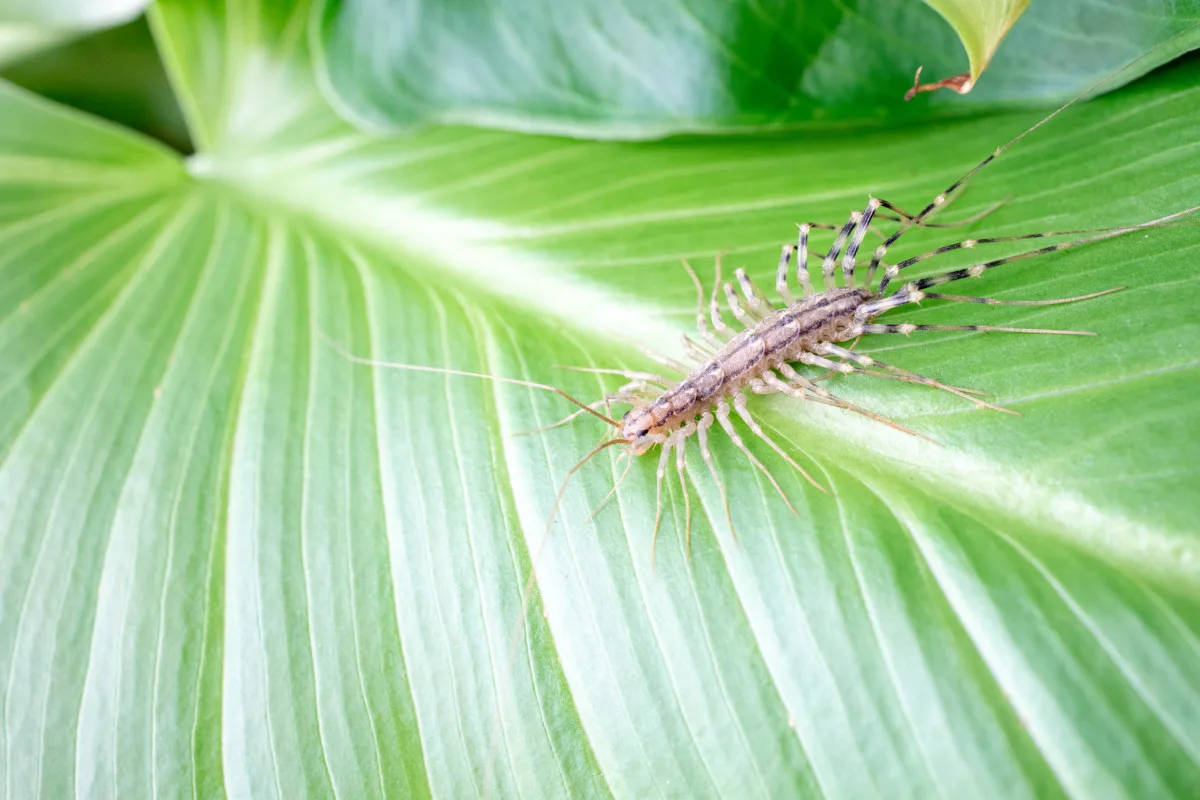
While these multi-legged insects are usually beneficial, they can cause problems for houseplants—especially when limited to a small area. Millipedes aid decomposition by eating organic matter like fallen leaves, but indoors, they might be forced to munch on living plant material.
How to Spot:
Look for brown or black multi-legged insects crawling around the soil surface and the base of plants.
Symptoms:
Centipedes and millipedes rarely harm healthy plants, but many people don’t like the idea of them taking residence in their homes. You’re most likely to notice them after watering, replanting, or otherwise disturbing the soil.
Treatment:
Since they are easy to spot, centipedes and millipedes can be hand-pulled out of the pot. If large numbers are present, consider switching out the potting soil, knocking as much dirt off the roots as possible in the process.
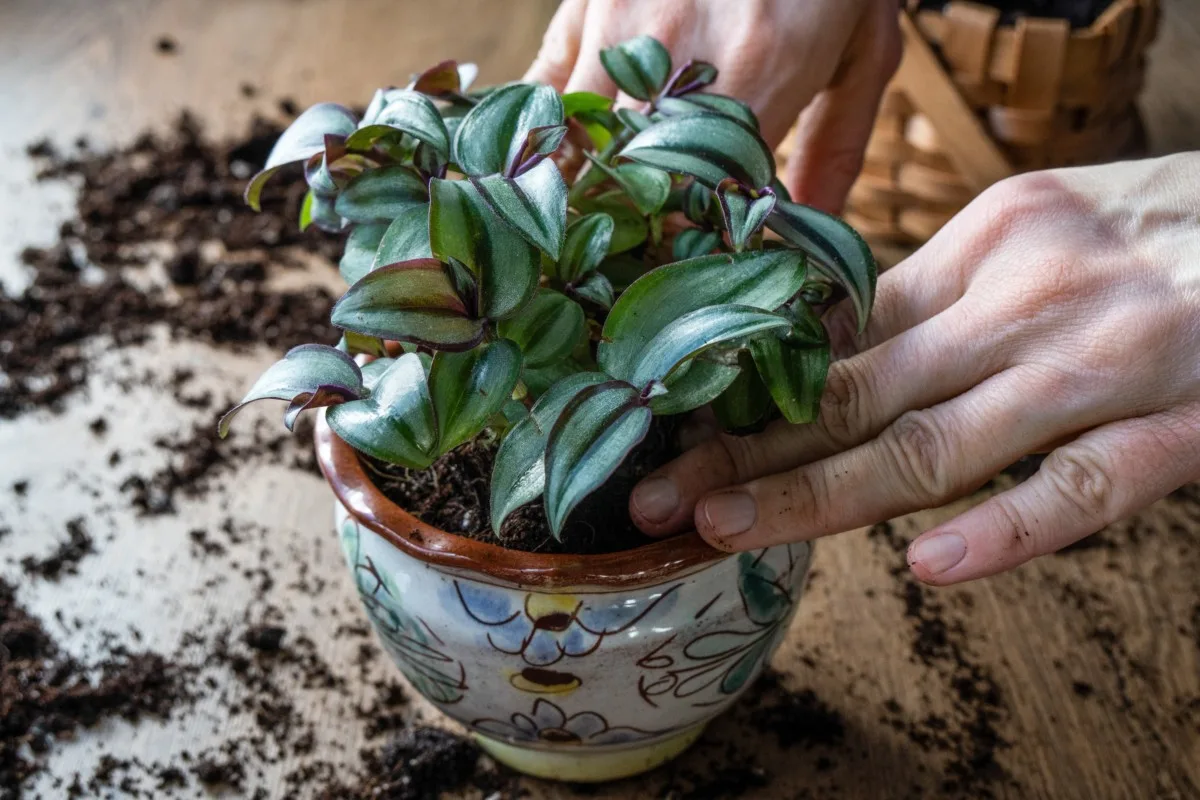
You may want to dunk the entire root ball in warm, soapy water for thirty minutes. This will drown any remaining insects.
5. Mealybugs
Though they are in the scale bug family, mealybugs don’t have the hard armor of their relatives. While this makes them easier to eradicate, they tend to blend in with plants, and you might not notice them until the damage is severe.
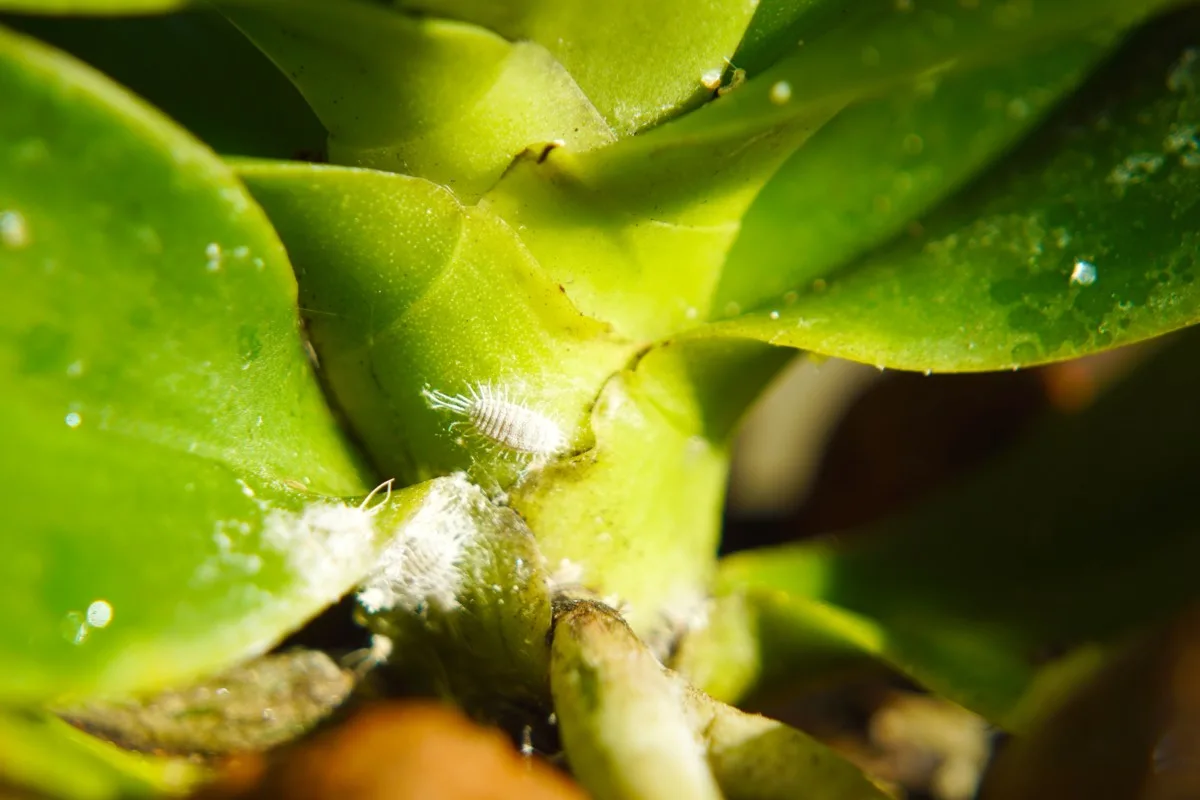
How To Spot:
White with a fuzzy coating, mealybugs are reasonably large compared to other pests and tend to latch onto one spot on a plant to suck its sap. They usually cluster together, creating a wool-like appearance along the stem or undersides of leaves.
Symptoms:
Look for clusters of insects along the undersides of leaves and in the joints along stems. You can usually see what looks like puffs of cotton and a honeydew residue where they feed. The presence of ants is also a sign of mealybugs, as ants “farm” the smaller insects and eat the honeydew.
Infested plants will wilt and look dehydrated. Left untreated, they will weaken the plant and cause its leaves to yellow and fall off.
Treatment:
If you spot the insects, knock them off the plant by hand or spray them off with water, ensuring that you focus on the undersides of the leaves.
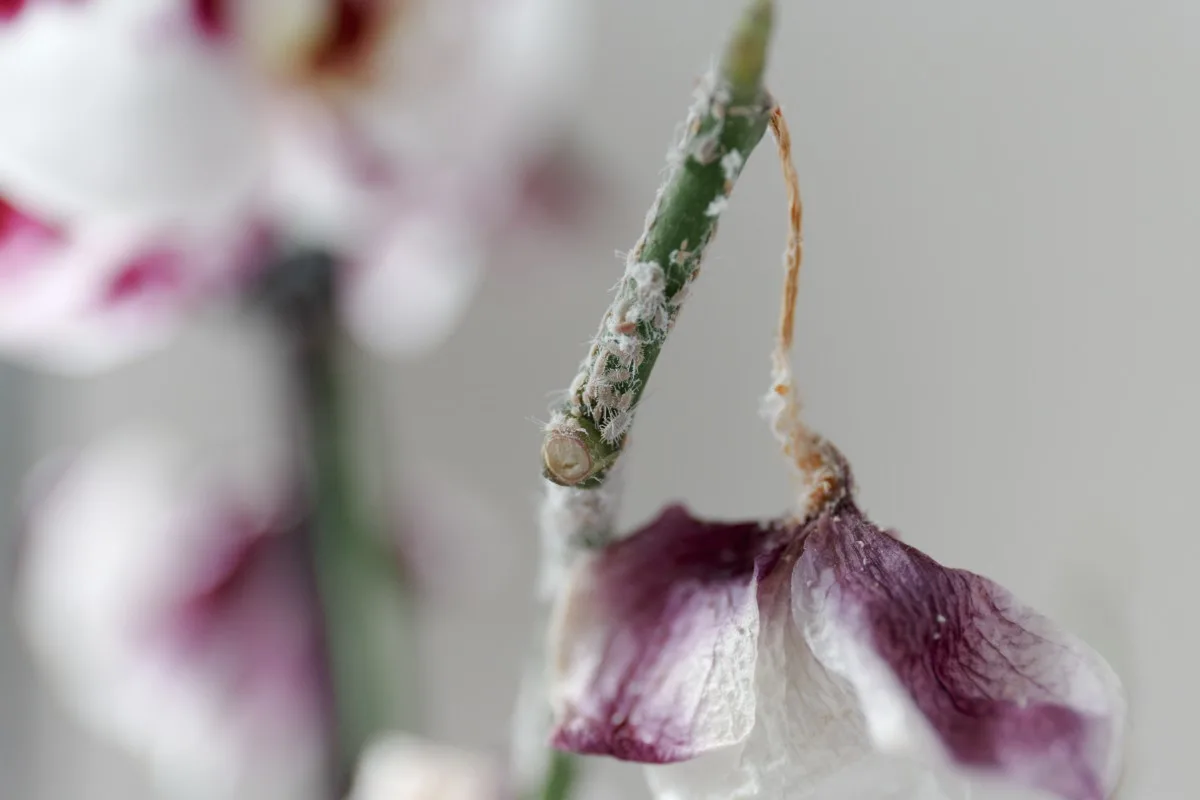
A large infestation is better managed with insecticidal soap or some alcohol on a cotton bud. Isolate the plant and treat it weekly until all signs of the infestation have disappeared.
Reduce the risk of mealybugs long term by not over-fertilizing houseplants, as they are drawn to high nitrogen levels in the soil.
6. Thrips
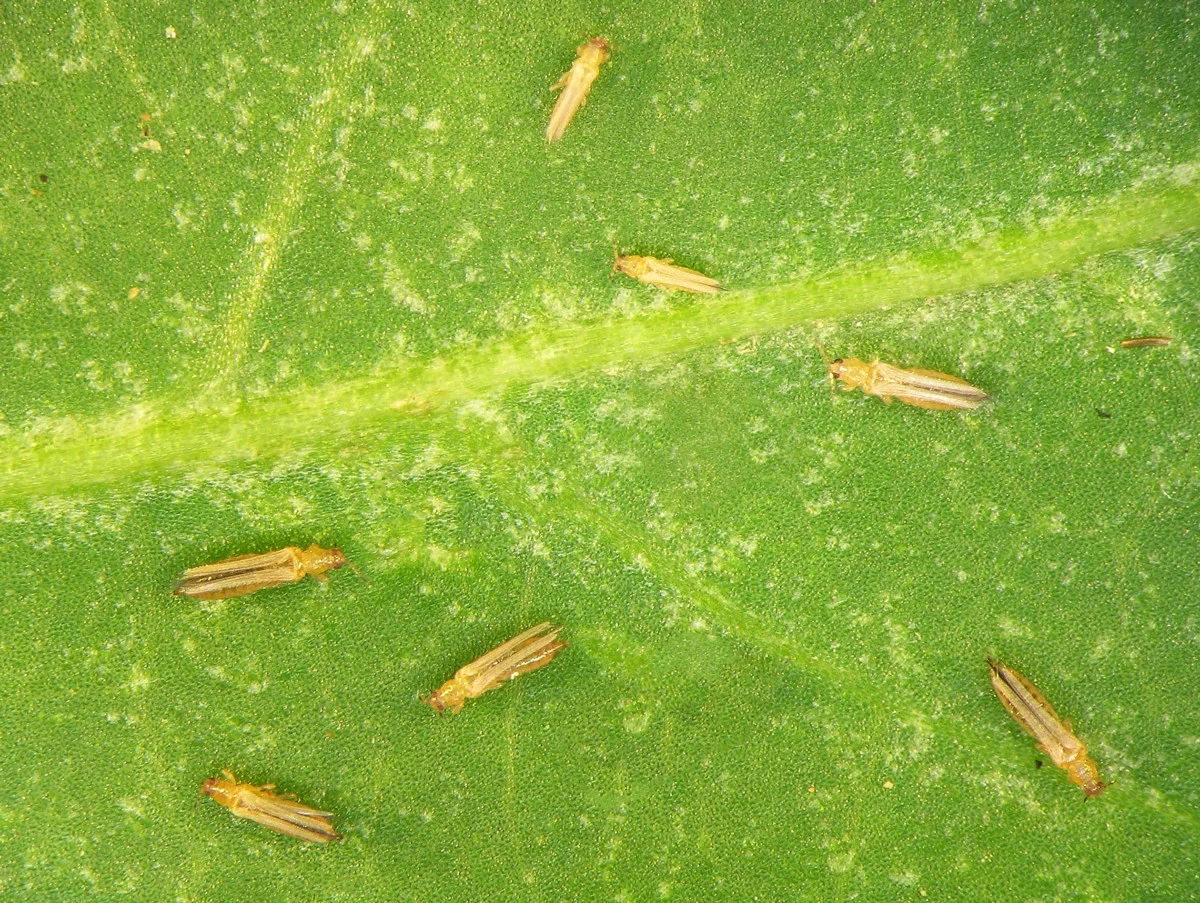
‘Thrips’ is a general term that encompasses thousands of species, making them somewhat hard to identify on your houseplants. However, you’re well served in attempting to eradicate them, as they are known to infest household goods like bedding, clothes, furniture, and even electronics.
For this reason, it pays to know how to identify them so you can get an infestation under control.
How to Spot:
Most thrips are less than a millimeter long, meaning they are easiest to see with a magnifying glass. Only some have wings, but all varieties that infest plants suck their sap.
Symptoms:
Adult females make slits in leaves into which they can lay up to 80 eggs at a time, and the wingless nymphs that hatch out are the ones that cause damage. You’ll typically see them clustered in groups to feed and will often jump away as you approach.
Infected leaves often turn pale or silvery before dying off, and plants can become scarred and twisted over the long term.
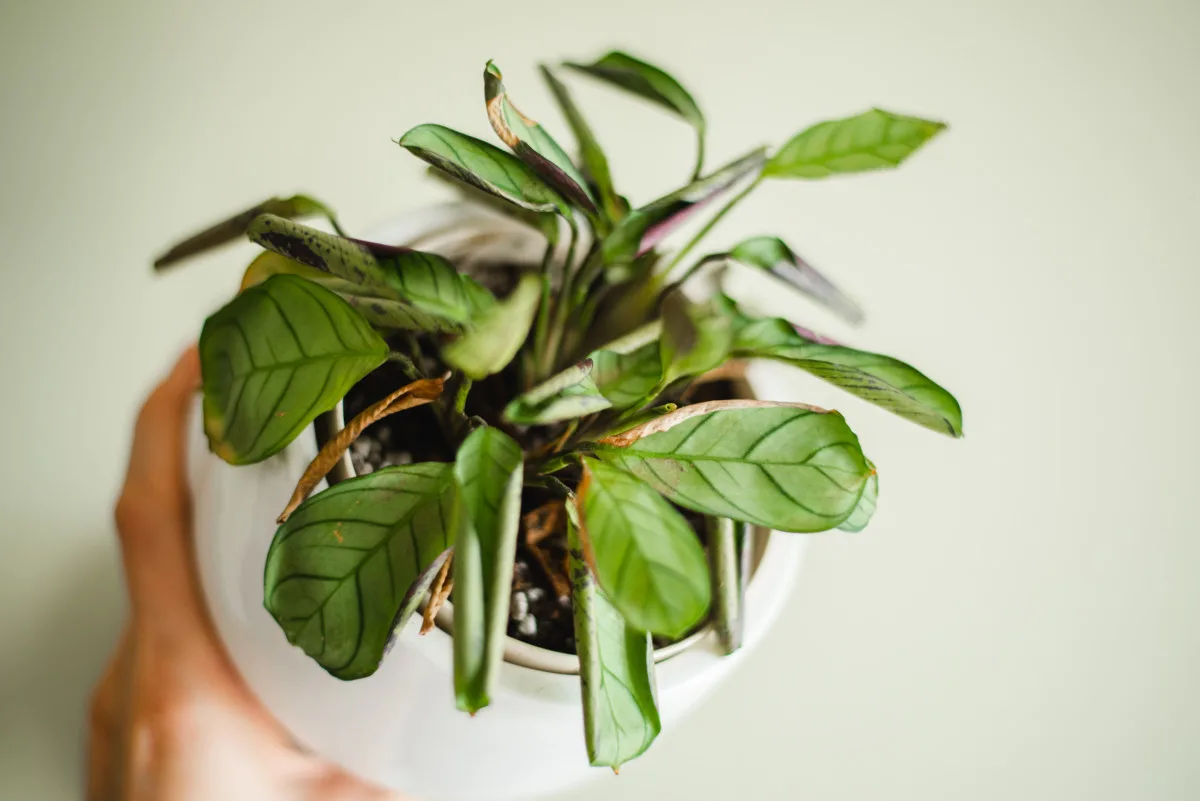
How to Treat:
The best way to control thrips is to avoid them in the first place. Keep the planter free of fallen leaves and other debris, and consider setting up sticky tape traps to keep them away.
A strong dose of lukewarm water can dislodge any eggs, and neem oil or other organic insecticides work well for spot treatments once you see signs of the insects.
7. Springtails
These small, light-colored insects live in the soil and feast on decaying plant material. Though they act like fleas and can be annoying, springtails won’t cause much (if any) plant damage. Even so, many plant owners prefer to eradicate them.
How to spot:
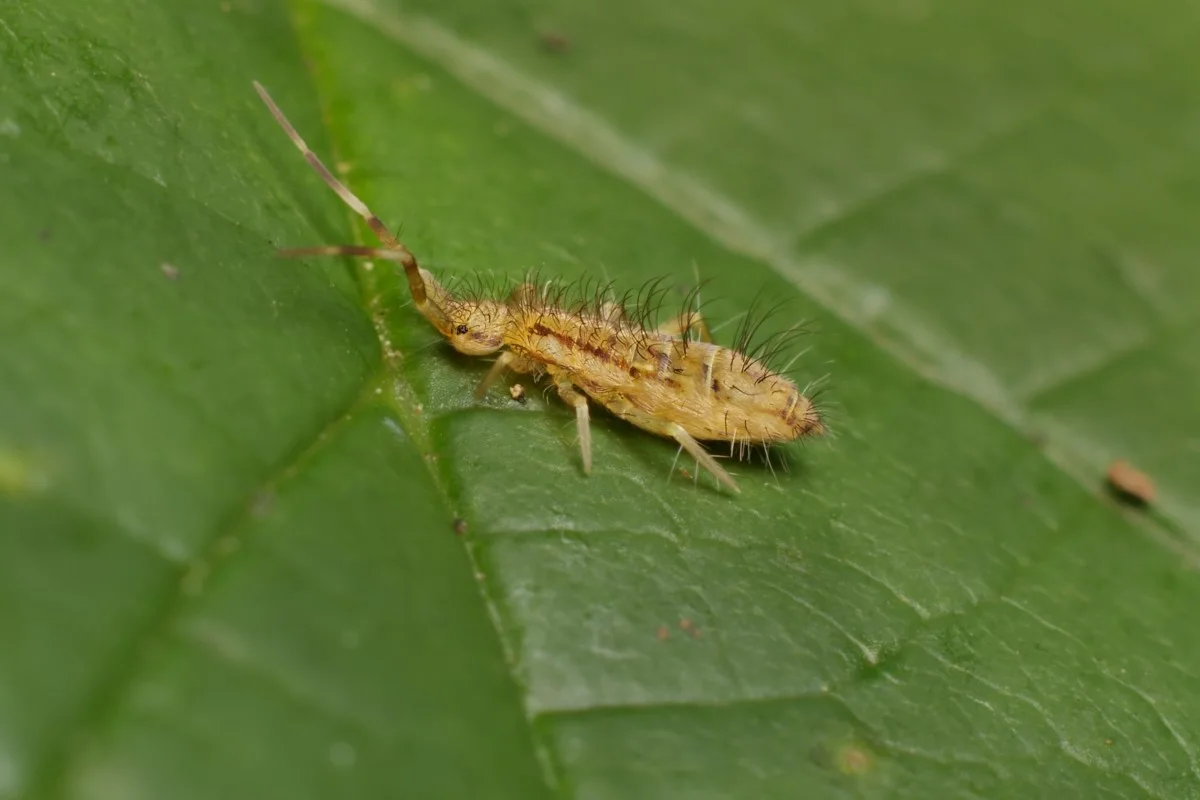
Springtails thrive in moist environments filled with organic material. While small, you can usually see them easily against dark soil. One telltale sign is they tend to jump if you approach.
Symptoms:
Springtails tend to live on plants without causing much damage. However, their presence may be a sign of other insects.
Treatment:
Springtails thrive in moist environments, so allowing the potting soil to dry out between watering can deter them.
8. Fungus Gnats
While they resemble the harmless fruit flies you likely occasionally live within the pantry, fungus gnats can cause severe damage to houseplants by feasting on their roots.
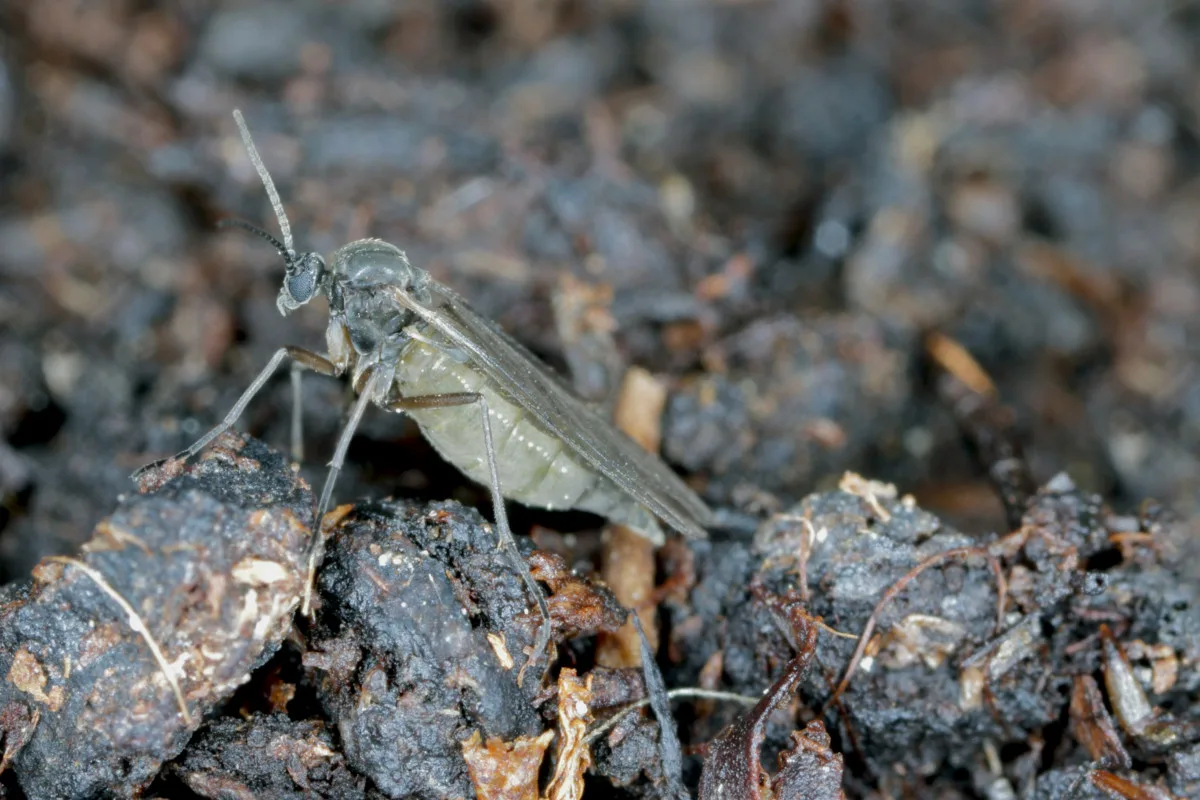
How to Spot:
These insects look like tiny mosquitos, and you’ll likely see a cloud fly out of the soil as you water. The larva is almost translucent, with shiny black heads.
Symptoms:
It’s the larval stage of this insect that causes the most damage. Immature gnats live in the soil and burrow down to plant roots for a food source. Adults tend to stay close by and can be seen as tiny flying insects buzzing around the base.
Infected plants will quickly wilt and yellow due to their compromised root system. Over time, the plant will become stunted and malnourished.
Treatment:
Fungus gnats are often the result of over-watering, as wet soil creates their perfect breeding ground. Consequently, the first line of defense should be to refrain from watering until the soil dries out. This should deter the gnats within a few days.
Note: returning to overwatering may cause the gnats to return, as they thrive in moist environments.
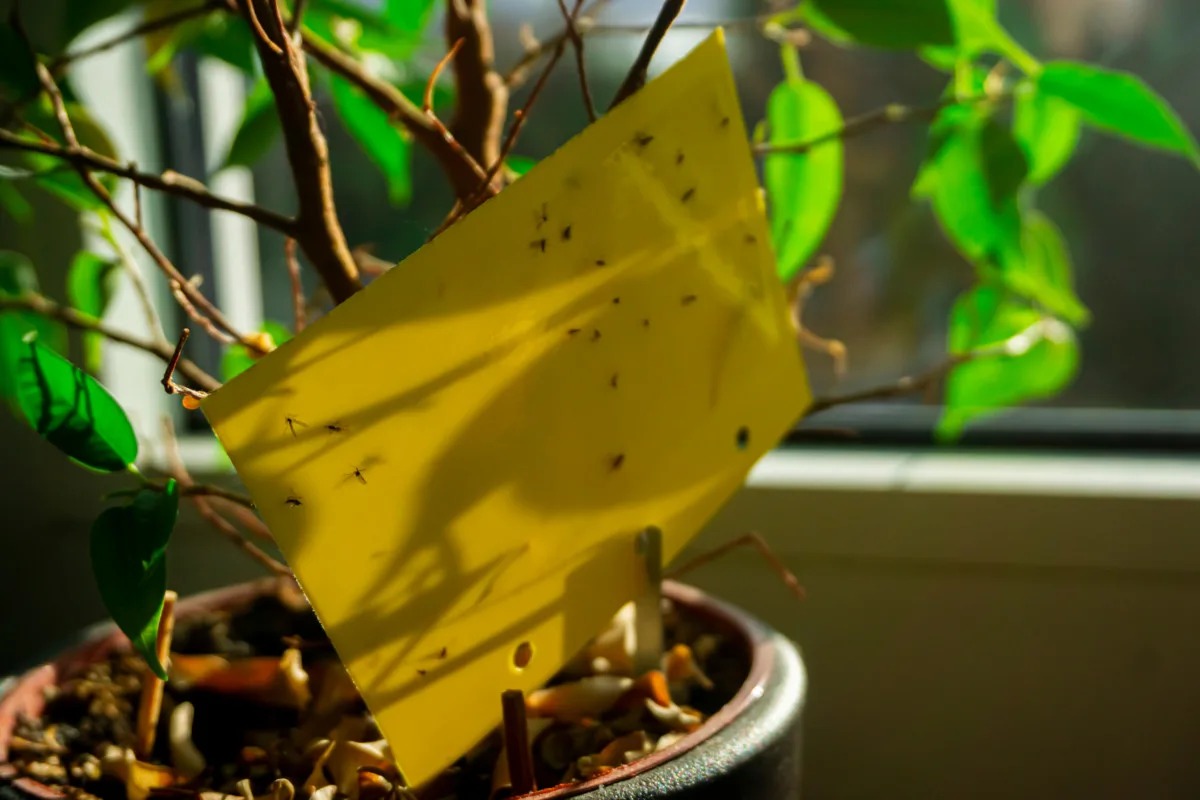
If that’s not effective, consider a product such as Mosquito Bits, which relies on bacteria to kill the gnats at the larval stage. Sticky fly traps can attract and remove adult gnats, and topdressing the soil with rice hulls also deters them.
How To Prevent Houseplant Pests in the First Place
While houseplant pests tend to be easier to control than their outdoor counterparts, the best line of defense is keeping them from moving in at all.
This works best when you perform regular plant maintenance, including removing dead leaves, trimming back growth, and switching out the soil after signs of an infestation. Depending on the plant variety, this might also mean letting the soil dry out between watering sessions, as overwatering is a leading cause of pest problems.
Your goal should be to keep each plant in the best shape possible. Then, if an insect does invade, it will better be able to withstand any damage.
Taking care of houseplants takes constant diligence. But, so long as you monitor your plants regularly and address problems as soon as they appear, they should last for years to come.

Get the famous Rural Sprout newsletter delivered to your inbox.
Including Sunday ramblings from our editor, Tracey, as well as “What’s Up Wednesday” our roundup of what’s in season and new article updates and alerts.

